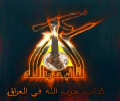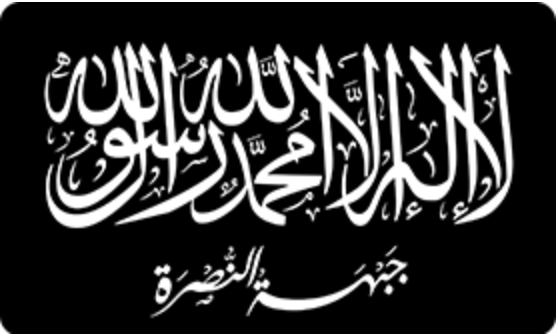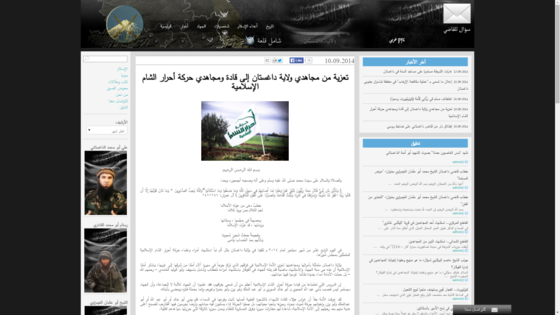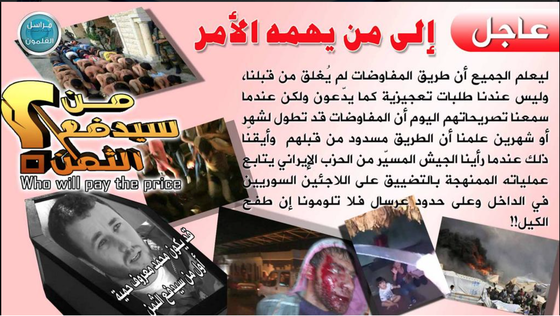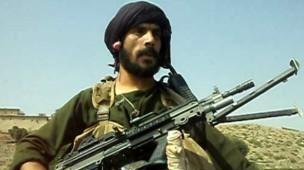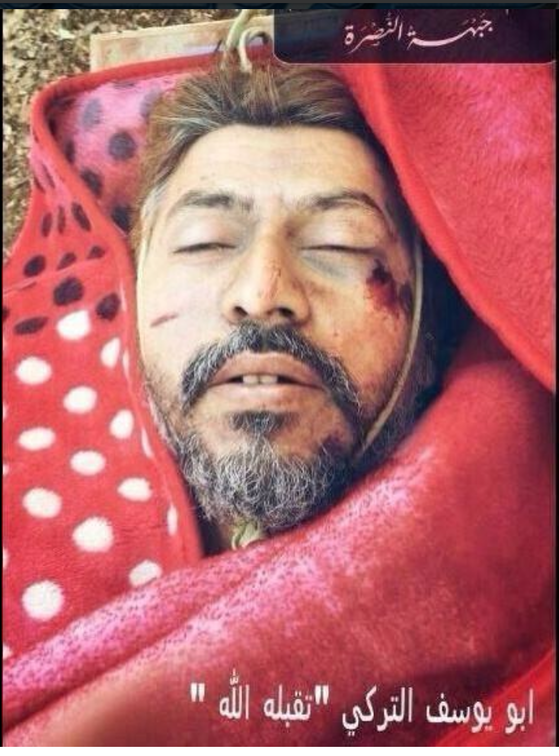President Barack Obama has announced that the United States will "degrade and ultimately destroy" the Islamic State (or Islamic State of Iraq and the Levant, ISIL) with "a comprehensive and sustained counterterrorism strategy."
The strategy, presented in a speech to the nation on Sept. 10, will rely on local forces to do the bulk of the fighting while the US provides air strikes, intelligence and other support. This is America's current plan of attack for al Qaeda's regional branches in Yemen and Somalia.
"But I want the American people to understand how this effort will be different from the wars in Iraq and Afghanistan. It will not involve American combat troops fighting on foreign soil," Obama said. The president made it clear that the strategy he envisions for confronting the Islamic State will center around US air power supporting "partner forces on the ground."
But US troops, including special operations forces, as well as operatives from the CIA, have been spotted on the ground in Yemen and Somalia.
Obama describes the counterterrorism strategy in Yemen and Somalia as "one that we have successfully pursued ... for years." However, several years of cooperation with willing partner governments have yielded questionable results.
Strategy for Yemen far from successful, AQAP challenges state
While Obama describes US counterterrorism operations in Yemen and Somalia as a success, the reality is much different. Consider, first, the war in Yemen.
The US launched its first airstrike in Yemen in 2002, but al Qaeda's efforts were focused mainly elsewhere in the years that followed. Al Qaeda attempted to launch an insurgency in Saudi Arabia in 2003. But the kingdom fought back, crushing al Qaeda's efforts over the next three years. This forced al Qaeda to reorganize its efforts inside Yemen, which has a much weaker central government than Saudi Arabia.
A confluence of factors led to the successful rebirth of al Qaeda in the Arabian Peninsula (AQAP) by early 2009. AQAP quickly became a force that could both challenge the Yemeni state for power and threaten the US homeland as well as American interests throughout the region.
The emir of AQAP today, Nasir al Wuhayshi, also serves as al Qaeda's global general manager, giving him power across al Qaeda's international terrorist network.
AQAP's resurrection forced the US to become actively involved in Yemen, with a series of drone and other missile strikes that targeted AQAP and its leadership cadre. In addition, the US has provided intelligence, logistics, weapons, ammunition, and other support to the Yemeni military and security services.
By 2011, AQAP seized control of much of southern Yemen, and held it for more than a year despite an intensive US-led drone campaign. Yemeni troops prevented AQAP from openly controlling the provinces of Abyan and Shabwa by mid-2012, but the jihadist group shifted its fighters to other provinces and still controls large areas of central, southern, and eastern Yemen.
AQAP is now orchestrating a prolific insurgency that presents the Yemeni government with constant challenges.
In April, President Obama's State Department released its Country Reports on Terrorism for 2013. The story the State Department tells for Yemen is far from a resounding success.
While the government of Yemen continues in "its fight against ... AQAP," State said, it is "struggling somewhat in this effort due to an ongoing political and security restructuring within the government itself." Yemen "struggled to maintain momentum against a resilient" AQAP in 2013, the State Department's report continued, noting that a "military and security restructuring process" remains "incomplete," leaving "front-line units often poorly trained or poorly equipped to counter the threat posed by AQAP."
As a result, the "Yemeni military did not undertake major counterterrorism operations through most of 2013." Instead, State reported, the military "primarily assumed a defensive posture, while relying on small-scale operations, including air strikes and raids, in response to AQAP attacks."
AQAP, meanwhile, was on the offensive in 2013. The group's attacks have "increased in complexity and brazenness," targeting "military and security installations across several governorates and ambushing checkpoints, in addition to assassinating and kidnapping military, security, and intelligence officials."
In 2013, according to the State Department, "AQAP and AQAP-affiliated groups carried out hundreds of attacks throughout Yemen, including suicide bombings, car bombings, ambushes, kidnappings, and targeted assassinations by gunmen riding motorcycles."
The situation has hardly improved throughout 2014. AQAP has openly challenged the state for control of the eastern province of Hadramout even as the US has continued counterterrorism operations.
Shabaab still an effective insurgency organization, with a regional reach
In Somalia, the US has been supporting African forces in their fight against Shabaab and its predecessor since 2006. Shabaab took control of much of southern and central Somalia by 2009, but was forced out of most major cities in an offensive that began in 2011. Shabaab still controls much of the countryside in southern Somalia to this day. And it has successfully expanded the scope of its terrorist operations throughout the region, executing attacks in Djibouti, Kenya, and Uganda.
In July 2013, the UN's Monitoring Group for Eritrea and Somalia issued its assessment of the situation. The UN found that Shabaab has "suffered conventional military setbacks, particularly in urban centres, including the loss of Kismaayo, as the forces of AMISOM and the Somali National Army expanded their areas of territorial control."
The UN observed, however, that, Shabaab "continues to control most of southern and central Somalia and has shifted its strategic posture to asymmetrical warfare in both urban centres and the countryside." Unfortunately, Shabaab's "military strength ... remains arguably intact in terms of operational readiness, chain of command, discipline and communication capabilities." By shifting its tactics and "avoiding direct military confrontation, it has preserved the core of its fighting force and resources."
The UN went on to note the importance of the Amniyat, Shabaab's "secret service" organization, in maintaining the group's cohesion. The UN's report was written more than one year before Shabaab's emir, Ahmed Godane, was killed in a US airstrike. But while it is too early to tell the full impact of Godane's death, the group quickly named a successor and reaffirmed its loyalty to Ayman al Zawahiri, the head of al Qaeda.
In its Country Reports on Terrorism for 2013, the State Department found that Shabaab remains an effective fighting force.
"While progress was made in some areas," State reported, Shabaab "continued to exploit divisions within Somalia and commit asymmetric attacks to destabilize the country."
The State Department's report continued: "Compared with previous years, the terrorist group al-Shabaab executed a wider spectrum of attacks in Mogadishu and throughout Somalia, including more sophisticated, asymmetrical attacks and assassinations; and destruction of property." Security forces have taken control of major urban areas, but Shabaab "continued to control large sections of rural areas."
"The ability of federal, local, and regional authorities to prevent and pre-empt Shabaab terrorist attacks remained limited," State cautioned. "The overstretched AMISOM forces could not take the offensive against Shabaab nor liberate new areas controlled by al-Shabaab in 2013." In November 2013, this forced the UN Security Council to approve "an increase of 4,000 troops for AMISOM to enable increased offensive operations."
The bottom line is that America's partners in East Africa are not close to defeating Shabaab.
Viable partners are the key
Iraq and Syria likely present far more daunting challenges than Somalia and Yemen.
In Somalia, the government may be weak, but it cooperates with the US campaign. AMISOM and the Somali National Army are invested in the fight, even if they are not able to eradicate Shabaab. And strong regional partners, such as Djibouti, Ethiopia and Kenya, are actively involved in containing the threat.
In Yemen, the military and government have encountered local resistance to the US drone campaign, mainly due to civilian deaths caused by the airstrikes. But the Yemeni government, while far from being either a strong or always reliable partner, still provides valuable assistance.
The State Department noted in its Country Reports on Terrorism for 2013 that Yemeni President Abd Rabbo Mansour Hadi has "supported US counterterrorism operations in Yemen and encouraged cooperation among the US military and Yemen's Special Operations Command and the Ministry of Interior's Counterterrorism Unit." The US military has also "trained Yemeni counterterrorism units and advised efforts to restructure the Ministry of Defense." These forces are joined by government-backed tribal militias known as Popular Committees, which played a key role in driving AQAP back in 2012.
Iran meddles in Yemen by supporting Shia Houthi rebels opposed to the government, but the Yemeni government is opposed to Iran's designs. And Saudi Arabia remains a key part of the equation, providing intelligence and security assistance in the fight against both AQAP and the Houthis.
Iraq is far more complex. The Shia-led Iraqi government is close to Iran. And the Iranian-supported Shia militias that targeted and killed US troops between 2004-2011 are prominent on the Iraqi battlefield. American airstrikes have already been used by Iranian-backed forces, including known terrorist organizations, as cover for their on-the-ground advances. But Iranian extremists are not a viable partner, as their actions only inflame tensions among the Sunni population, creating more allies for the Islamic State, which can then portray itself as the only defense against Iran's aggression.
Fortunately, the Kurds and the Sunni Awakening forces are willing allies, but cooperating with these groups will cause other groups to extract a price from the US. The US will need to keep pressure on the Iraqi government to include them going forward. And a major effort is needed to boost America's meager assistance to these natural allies inside Iraq.
In Syria, the situation is worse, as there are even fewer credible actors to call partners. The US is opposed to the Assad government, which is backed by Russia, Iran, and the terrorist organization Hezbollah. As in Iraq, Shia extremism only serves to add fuel to the fire.
Islamist and jihadist rebel groups form the backbone of the insurgency. The Obama administration is primarily focused on the Islamic State. But the Al Nusrah Front, which is al Qaeda's branch in Syria, the Islamic Front, and the Muhajireen Army constitute some of the most effective rebel groups in Syria. While these three groups oppose both Assad and the Islamic State, they are also enemies of the US. Additionally, top leaders in the Free Syrian Army, which is held up as an effective ally, have stated they support the Al Nusrah Front, would not oppose it in the future, and have provided it with weapons and support. American-backed rebel groups regularly fight alongside Al Nusrah on the battlefield.
America's friends in Yemen and Somalia are far from finishing the fight against AQAP and Shabaab.
Amazingly, however, they are better near-term allies than some of America's partners in Iraq and Syria.
Counterterrorism, not counterinsurgency
In both Somalia and Yemen, US airstrikes have killed top terrorist leaders, including Shabaab's emir and AQAP's deputy leaders, as well as some of both organizations' top operatives. But AQAP and Shabaab have quickly replaced the slain leaders and continued to effectively pursue their respective insurgencies.
Although the US has conducted counterterrorism operations in Somalia and Yemen, both countries remain major terrorist hubs, host training camps, and are breeding grounds for recruits.
As a result, al Qaeda's branches in both countries continue to pose significant security challenges to the US. On Dec. 25, 2009, an AQAP-trained suicide bomber boarded a Detroit-bound plane and nearly blew it up. Luck saved the day. Prior to the attack, the US counterterrorism bureaucracy assumed that AQAP was a threat only to American interests inside Yemen.
Since that time, the US government has scrambled to stop additional AQAP plots, relying in part on intelligence from counterterrorism partners in Saudi Arabia and Yemen. But even with that full-court press, AQAP continues to threaten American interests. In August 2013, the US shuttered more than 20 diplomatic facilities after it was learned that AQAP was planning to carry out one or more attacks. AQAP continues to probe for America's weaknesses.
Somalia and Yemen are engrossed in perpetual conflicts. There are good reasons to believe that the situations in Iraq and Syria will continue to be more dire. AQAP, Shabaab, and the Islamic State are all primarily insurgency organizations that are fighting for territory. Counterterrorism strikes will continue to have only a limited effect.
In no theater is success in sight.
